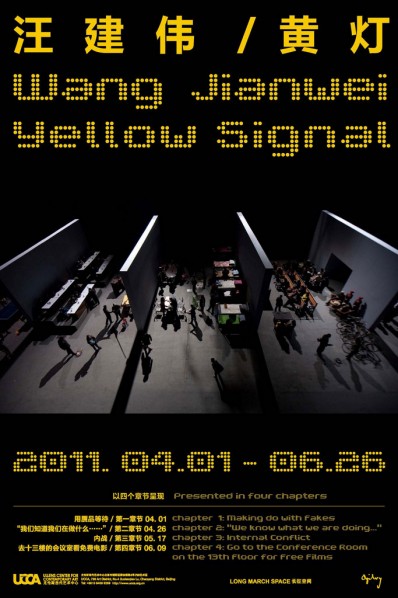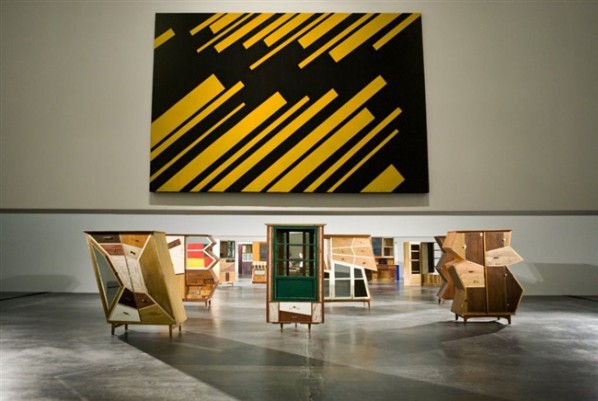
Chapter 3 of Wang Jianwei's "Yellow Signal": Internal Conflict
by Xu Tong
Preface
Low repeating sound, oppressive walls, a strong but slim bundle of Yellow Light source... contemporary Chinese artist Wang Jianwei who owns a variety of titles exhibited his new works "Yellow Signal" at the Ullens Center on April 1st, 2011.
Film, Play, Multimedia, Public art, Painting ......through all these art forms, Wang Jianwei has been using multiple art forms and making interdisciplinary explorations. The new work "Yellow Signal" was another experiment, but this experiment was established using his own personal art language which he has gradually developed.
In the "Yellow Signal" as in some of his previous works, Wang Jianwei's personal language is increasingly clear. He always used to borrow knowledge from other areas, borrowing common daily experiences and objects belonging to people to shape something which belongs to himself and also this society. In addition, Wang Jianwei is also very good at using ambiguity. Both his art language and his way of expression embody the characteristics of ambiguity and vagueness.
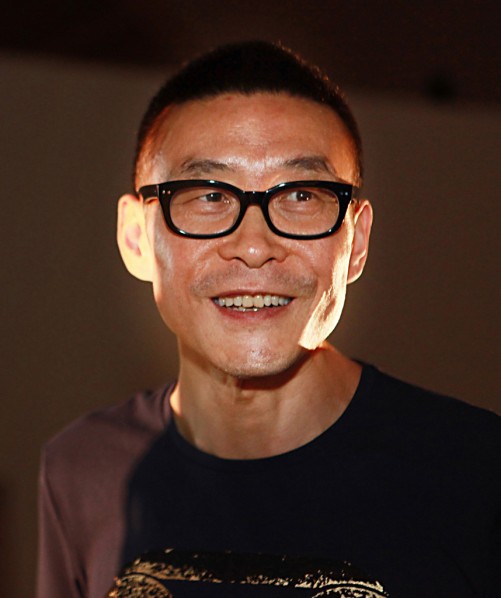
Wang Jianwei was at the opening ceremony.
First, Borrowing
Wang Jianwei has been concerned with the theater for a long time. The very arrangement of "Yellow Signal" is borrowed from the theater.
"Yellow Signal" is divided into four sections just like a four-act play which has been staged for nearly three months. The clusters of basketballs, transformed old furniture and videos playing in a loop ,the video device as the protagonist of the entire theater, always on at that stage , and waiting for the entrance of the audience.
Wang Jianwei's "Yellow Signal" borrows not only elements of the theater but also numerous of objects , his past works, as well as people's daily experience, such as basketballs, and old furniture he has collected from the 1950s.
Wang Jianwei's works hide familiar daily experiences which are then modified and makes the viewer's experience uncomfortable.
In fact, Wang Jianwei has always been looking for a kind of public experience, of course, this experience initially comes from the artists themselves. Then, based on this common experience, he gives people a kind of familiar odor, but from this familiar feeling, he creates ambiguity. Visual and auditory feelings combine in a moment then lead the audience back to a past experience, the yellow light is dim, shining on an old dream.
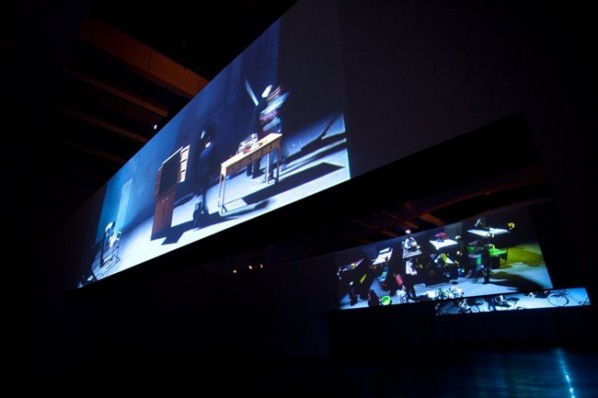
Chapter 1 Making do with Fakes, mixed media installation
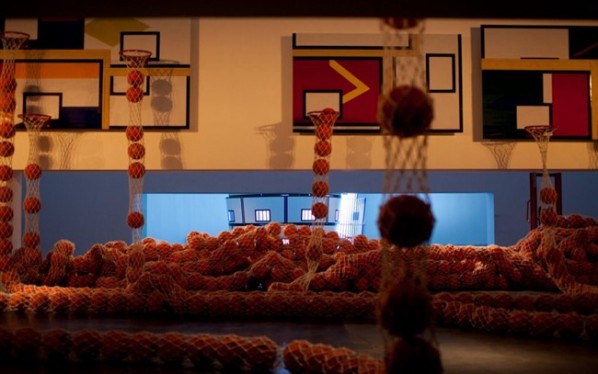
Chapter 2 We know what we are doing…
Second, Ambiguity
Wang Jianwei's "Yellow Signal" borrows from the theater; borrows objects shaped by work; borrows some of people's daily experiences to contribute to the overall experience. It is worth emphasizing that Wang Jianwei is borrowing rather than embezzling. Borrowing is in order to transform, add or change something beyond the familiar experience to create an effect which is both strange and familiar. When facing the works in the "Yellow Signal",people will always feel in the middle of a dualistic state. What Wang Jianwei pursues is exactly the ambiguity which is hard to speak of and the contrary condition between "yes" and "no".
The old furniture, for example, reveals various traces of the past, we see in the mirror's reflection something new along with ourselves today. The old furniture is useful and their function is complete, however the new furniture after processing loses its function as a piece of furniture and become "useless".
In fact, all ambiguity of Wang Jianwei is in manufacturing illusion which results in viewers getting lost in the known world. This awareness has the character of both Kafka and Borges. All these works are all in an attempt to imply the meaning of "Yellow Signal".
Yellow Signal, as the intermediate state of the traffic lights is indeed between the "red stop" and "green go". What is Yellow light in the end? It is an artificial concept. The world's first traffic lights which appeared in 1868 in London only have two colours: red and green and the Yellow Signal's joining was in the late 1920s with the help of a Chinese person - Hu Ruding's contribution. He felt that the alternating conversion between red and green was too sudden and a transition was necessary.
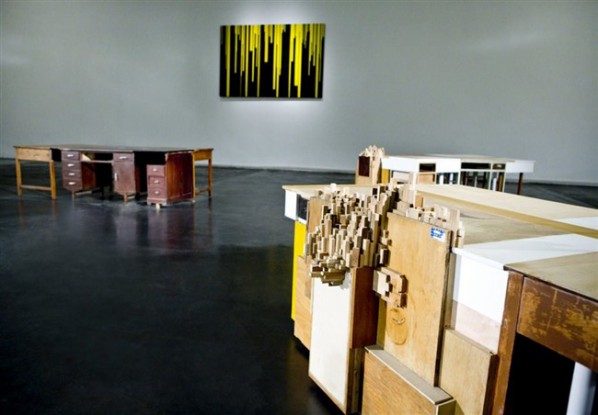
Chapter 3 Internal Conflict(detail)
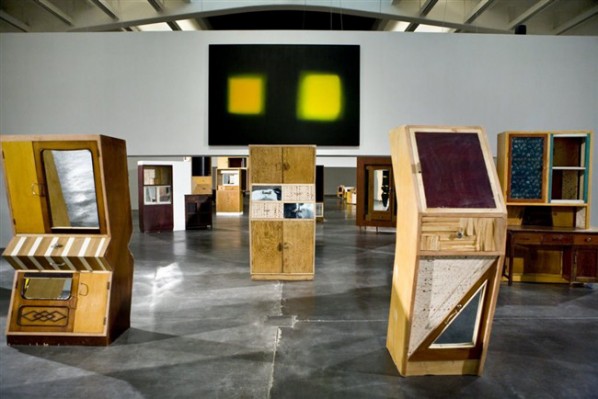
Chapter 3 Internal Conflict(detail), mixed media installation
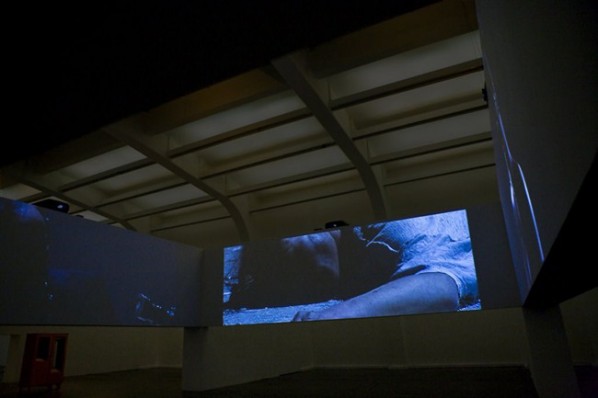
Chapter 4 Go to the Conference Room on the 13th Floor for Free Films, mixed media installation
Third, The Limits of Ambiguity?
Wang Jianwei's "Yellow Signal", in fact, is not meant to stay ambiguous and vague, but the conversion process between the dualistic or even multivariant is bound to be vague. Wang Jianwei's self-interpretation of the "Yellow Signal" is vague too. However, what is the limit of ambiguity?
When Wang Jianwei was faced with opposition to dualism he attempted to transform but not to deconstruct. He is raising questions. As an artist in constant exploration .Wang Jianwei creates all kinds of illusions on the basis of borrowing from daily experiences. He always maintains the attitude of questioning and suggests possibilities of depth. The ending he left is open. In the process and ending of others' intervention thus continuation is necessary.
About the author
Xu Tong is a graduate student who majors in art history at the Central Academy of Fine Arts. She is good at writing and has written art criticism on modern and contemporary art, contemporary poetry and book reviews for websites like CAFA ART INFO and magazines like The Star Poetry (Monthly), newspapers like China Times and so on.


